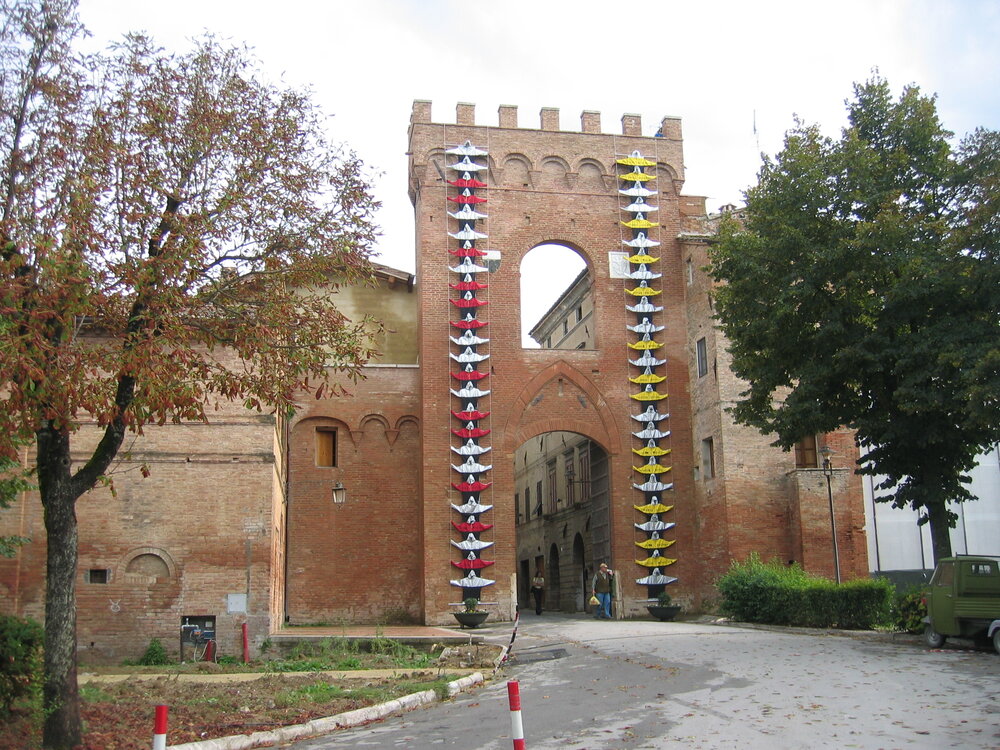"Time, eroded by heat, drips until it comes to a halt. Ideas, imprisoned by time and conventions, now sneak freely in and out of the shadows. The passage from Oscura to Sole suddenly reveals multiple possibilities for architectural exploration…
Lucy and Jorge Orta, journey to Buonconvento
Reflections on architecture, on the inhabitantsDear James,
Of all the sites in the town, the one that stimulates us the most is the Museo d’arte sacra, with its exhibited Renaissance artworks. The works I hope to create will reflect a spiritual approach to the religious symbols omnipresent in Tuscan art and architecture.
The first exploration is triggered by the growing interest that the community shapes in the form of ‘Body Architecture’, meaning individual forms that can be worn, separable yet connected, intertwined to form a single collective body: Connector Body Architecture. Echoing the verticality of Tuscan doors and towers, and the principle of the linear axis of cities, a linear “connector” sculpture will be suspended at the main gate. The multicolored bodies exemplify the ascent to the sky—bodies that climb endlessly—and reflect the Tuscan tradition of hanging brightly colored flags and banners on architecture.
The second exploration is activated by the Annunciation by Girolamo di Benvenuto in the Museo d’arte sacra. A series of sculptures imagined for the Museum and inspired by my recent research into the microstructure of the architecture of the human body and the potential for creating new architectural forms, the ‘dwelling cells’.
La prima scultura è una vecchia culla riempita di forme organiche in cristallo: In Vitro. Contrapposta al dipinto rinascimentale che annuncia la nascita alla Vergine, l’opera esprime una ‘visione’ o nascita dell’architettura come ‘estensioni’ organiche agli edifici storici toscani.
Al centro della galleria saranno sette modelli che reiterano il simbolo biblico dell’infinito e il processo di differenziazione cellulare: Totipotent Architecture. Riflettendo sulla trasformazione della cellula embrionale, attraverso la crescita e le fasi di evoluzione, per rivelarne infine le strutture architettoniche. Questi modelli, in ferro sottile saldato e incrostato di forme organiche in cristallo, saranno collocati su un ‘tavolo a specchio’, creando un insolito gioco di luci sulle forme in vetro soffiato.
Il settimo modello rappresenta il campanile di Buonconvento: Tower of Dreams. La Torre dei sogni è pensata per raccogliere sogni in centinaia di bottiglie di vetro in miniatura (provette di piccole dimensioni). È un invito agli abitanti a scrivere i propri sogni su una strisciolina di carta da inserire nelle bottiglie. I sogni sono idee per un’Utopia ‘reale’, speranze e desideri per il futuro, per amici, familiari, per la comunità, la regione e la nazione…”
— Lucy Orta, Arte all’Arte IX, 2004

